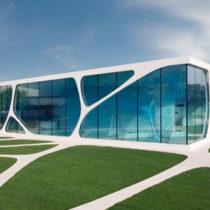Landscape Architecture for Landscape Architects › Forums › GENERAL DISCUSSION › 1958 article by Jane Jacobs
- This topic has 1 reply, 5 voices, and was last updated 13 years, 8 months ago by
 Zach Watson.
Zach Watson.
-
AuthorPosts
-
March 12, 2012 at 1:05 am #158464
 Roland BeinertParticipant
Roland BeinertParticipantThis is a reprint of an article by Jane Jacobs in Fortune: http://features.blogs.fortune.cnn.com/2011/09/18/downtown-is-for-people-fortune-classic-1958/
March 12, 2012 at 4:48 pm #158470 Zach WatsonParticipant
Zach WatsonParticipantRoland, thanks for the find and the post!
March 12, 2012 at 6:08 pm #158469 Trace OneParticipant
Trace OneParticipantI agree, thanks for posting this Roland..It is amazing how prescient she was..Charlottesville Virginia took out this neighborhood called Vinegar Hill, to be replaced by really hideous parking lots, basically….U of chicago, of course, raized all the jazz clubs around them to create a ‘buffer zone.” Jane Jacobs really had her act together, and she could write..
thanks..
March 12, 2012 at 6:37 pm #158468 Roland BeinertParticipant
Roland BeinertParticipantLast year I read Jan Gehl’s book Cities for People (a book I highly recommend to anyone who hasn’t read it). I knew Jacobs had influenced him, but didn’t realize how much of what he said was based on her work. The title of his book is obviously based on the title of this article. He also expanded on her argument that urban design should focus less on individual buildings and blocks. She really was decades ahead of us designers.
March 13, 2012 at 10:41 pm #158467mark foster
ParticipantThanks for this–reminds me that there were voices in the wilderness against not only city planning orthodoxy of the time but also the original modernist ethos. Good thing to keep in mind during this time of “new” modernism.
Having lived through the end of the first modernist age, I have been wondering how long it will take people to catch onto the fact that these sleek built-in seating areas we are seeing in photographs everywhere are just as uncomfortable and underused as the original ones were…
March 14, 2012 at 12:04 am #158466 Roland BeinertParticipant
Roland BeinertParticipantVery true about the seating areas. I see plenty of them that are never used. I think the location of the seating areas may be just as much of an issue as their design. That’s why we designers should get outside and walk and observe like Jacobs suggests. That’s what Jan Gehl did, and he came up with some surprisingly detailed suggestions about seating.
March 15, 2012 at 6:57 pm #158465 Les BallardParticipant
Les BallardParticipantPeople really want seats but they do not want to get wet, their rear shredded like on a mandolin by metal blades, piles (the myth persists though cold is an issue) or accosted / mugged. The UK – in my part at least – used to have bus shelters made of wood and thatched like a little shed but, instead of modernising these, they have become a metal bar along a supposed shelter that is actually little more than a wind tunnel with advertising. Sheds were burnt down and otherwise vandalised and things went on in them using the perceived shelter and at least on 3 sides. More remote public conveniences have also closed by anti social activity and repute as “cottages” for “cottaging” predominantly by males in new pairings, yet we now have urinals for predominantly young and drugged/drunk males placed in the road at weekends for people leaving late night clubs.
My suggestion is for a sinuous metallic structure with a straight but adequate sandwich construction plastic roof riveted on in situ. One side would have a wooden seat and, with a clear plastic window from end to end, either another seat or a latrine and pipes to a water source for flushing from an overhead tank and release to the sewer. There would be another curved area raised to make a roundel of that side with a narrow gap and you would have no business being there unless willing to use the facility. You would have to sit down to obtain some privacy and no other facility would be supplied other than a handle in the wall to flush with.
Modern cabin chains of conveniences provide a hook for coats, a drain, cleaning, tissue, a repository for “sharps” to encourage addicts to not leave used syringes on the floor and a hand washing facility. Homeless people inhabit them after a certain time in the evening. Private French supplied units tip and clean and the door opens after a certain time discouraging this habitation. Tissue is used for stopping up the sinks and/or setting fire to, largely by juveniles though is stored in thief proof holders.
I would allow those anxious to use the more minimal facility, extending to composting toilets in places, to provide their own tissue and/or wet wipes with regular policing. Wooden benches would stay dry and be made of similarly treated timber to those Finnish pre-fab houses that will not burn even if you use a molotov cocktail on them and resist attempts to carve and damage. Who has a better idea?
-
AuthorPosts
- You must be logged in to reply to this topic.


